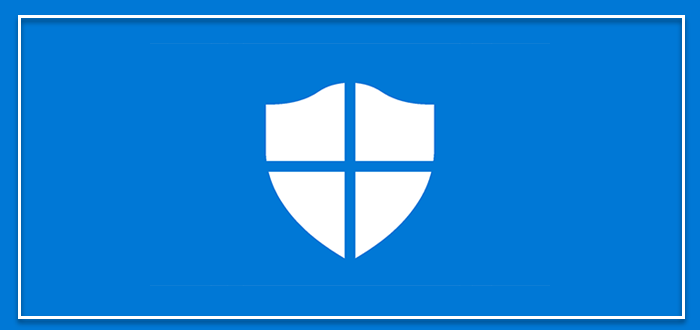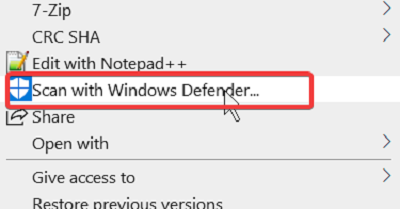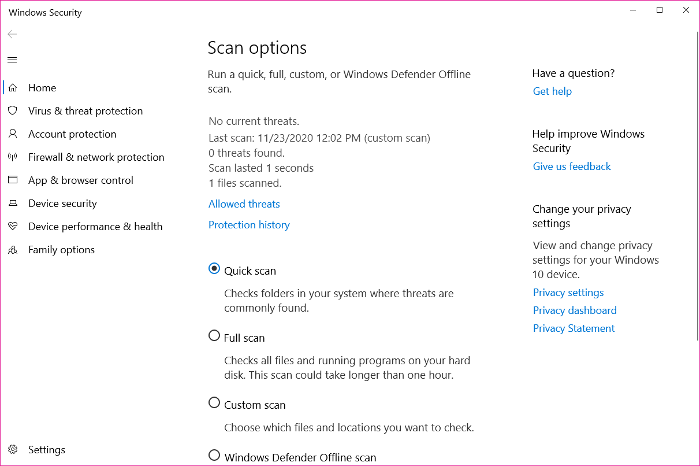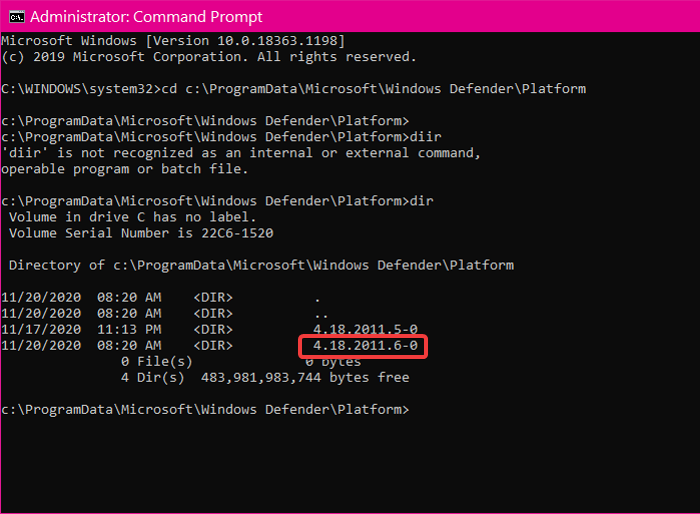Every Windows 11/10 machine comes with Microsoft Windows Defender Antivirus pre-installed. Windows Defender is a capable antimalware and antivirus software that offers real-time system protection and data security functions on demand.

This application can take care of your security needs and it also works perfectly with other antivirus and antimalware software. The background protection is robust enough, but in some situations, you may need to scan specific files and folders for malware or viruses.
Even though Windows Defender continuously monitors your computer system, for ransomware and similar risks, you can still ask it to scan individual files. This post will show you three ways to scan specific files and folders with Windows Defender.
Scan individual files & folders using Windows Defender
I’ll walk you through the three best ways to scan individual files and folders with Windows Defender. The three ways include the following:
- Using File Explorer.
- Using PowerShell.
- Using Command Prompt.
Those are the three methods we’ll treat. Continue reading for the complete steps for carrying out these processes.
1] Scan a specific file or folder with Windows Defender using File Explorer

This is the most straightforward way to scan a file or folder with Windows Defender.
- Press the Windows key + E key combination to open File Explorer.
- Navigate to the directory in which the file or folder is located. You could also get here by searching for the file or folder from the Start menu.
- Next, right-click on it from the search results and select Open file location.
- In the file’s folder, right-click on the file and select the Scan with Windows Defender option.
- Clicking on that option will launch Microsoft Defender on its Virus & threat protection page.

This page shows you the progress and results of your malware scans. You’ll also find other scanning modes.
- A Full scan takes the longest as it checks every file on your system, as well as running processes.
- The Quick scan option is quicker because it only scans the most common malware locations.
You can add the locations to scan manually using a Custom scan, but this option doesn’t work for individual files, only folders.
2] Scan a specific file or folder with Windows Defender using PowerShell
If you’re more of a command-line type of Windows user, you may prefer scanning the file or folder using PowerShell. Press the Windows key and search for PowerShell. Right-click on PowerShell and choose to Run as Administrator.
To scan a folder, input the command that follows in the PowerShell window and hit the ENTER key:
Start-MpScan -ScanType CustomScan -ScanPath "C:\THE\FOLDER\DIRECTORY\PATH"
NOTE: Change the\THE\FOLDER\DIRECTORY\PATH part of the above command to the actual path to the file for scanning.
Unless you wish to scan the entire folder, ensure that the location leads to the specific file and not the entire folder. In this case, the path ends with a file extension.
Hence, the command will look like this:
Start-MpScan -ScanType CustomScan -ScanPath "C:\THE\FILE\DIRECTORY\PATH.extension"
3] Scan a specific file or folder with Windows Defender using Command Prompt
You also need to run Command Prompt as an Administrator to scan files or folders with Microsoft Defender. Therefore, press the Windows key and search for cmd.
Right-click on Command Prompt and choose Run as Administrator. Type the following command inside Command Prompt and hit the ENTER key.
cd c:\ProgramData\Microsoft\Windows Defender\Platform

The above command takes you to the Platform folder of Windows Defender. The next step is to determine your latest version of Microsoft Defender.
Type in the following command and press ENTER.
dir
On running the above command, the Command Prompt displays the version number of the antivirus. Take note of this number.

The next command to run in Command Prompt will use the version number from the above step. Type cd, paste the number you copied, and press ENTER.
So, it will look like this:
cd 4.18.2011.6-0
Next, type the following command in Command Prompt and hit ENTER. This command scans the specified folder:
mpcmdrun -Scan -ScanType 3 -File "C:\PATH\TO\FOLDER"
NOTE: Change the C:\PATH\TO\FOLDER area of the above command to the path to the folder you want to scan. If you wish to scan a specific file, not a folder, change the path to that of the file. In this case, the command will end with a file extension and be in the following format:
mpcmdrun -Scan -ScanType 3 -File "C:\PATH\TO\FILE.extension"
For the Command Prompt and PowerShell methods, Windows Defender will only scan the folder or files that you specified in the command. You can also take advantage of PowerShell’s Windows Defender Modules.
I hope this helps.
How do I scan individual files with Windows Defender?
To scan individual files with Windows Defender, right-click the file or folder you’d like to check and choose ‘Scan with Microsoft Defender’ from the context menu. Once the scan is complete, a results summary will be displayed, confirming the selected items’ security status.
How do I allow certain files through Windows Defender?
To allow files through Windows Defender, open ‘Settings’ from the Start menu, navigate to ‘Update & Security’ > ‘Windows Security’ > ‘Virus & threat protection.’ Click ‘Manage settings’ under ‘Virus & threat protection settings.’ Then click ‘Add or remove exclusions,’ choose ‘Add an exclusion,’ and select the file, folder, or process to exclude.
How do I scan offline with Windows Defender?
To perform an offline scan with Windows Defender, open your Windows Security settings, navigate to ‘Virus & threat protection,’ and select ‘Scan options.’ Choose ‘Microsoft Defender Offline scan,’ then click ‘Scan now.’ This process will restart your PC and thoroughly scan for and remove persistent malware during boot-up.
How do I scan a file for Virus before downloading?
To scan a file for viruses before downloading, utilize VirusTotal’s online scanner. Visit the VirusTotal website, upload the file or paste the URL, and receive an immediate security analysis. This tool offers prompt and accurate assessments without the need for any downloads, ensuring safe file downloads.